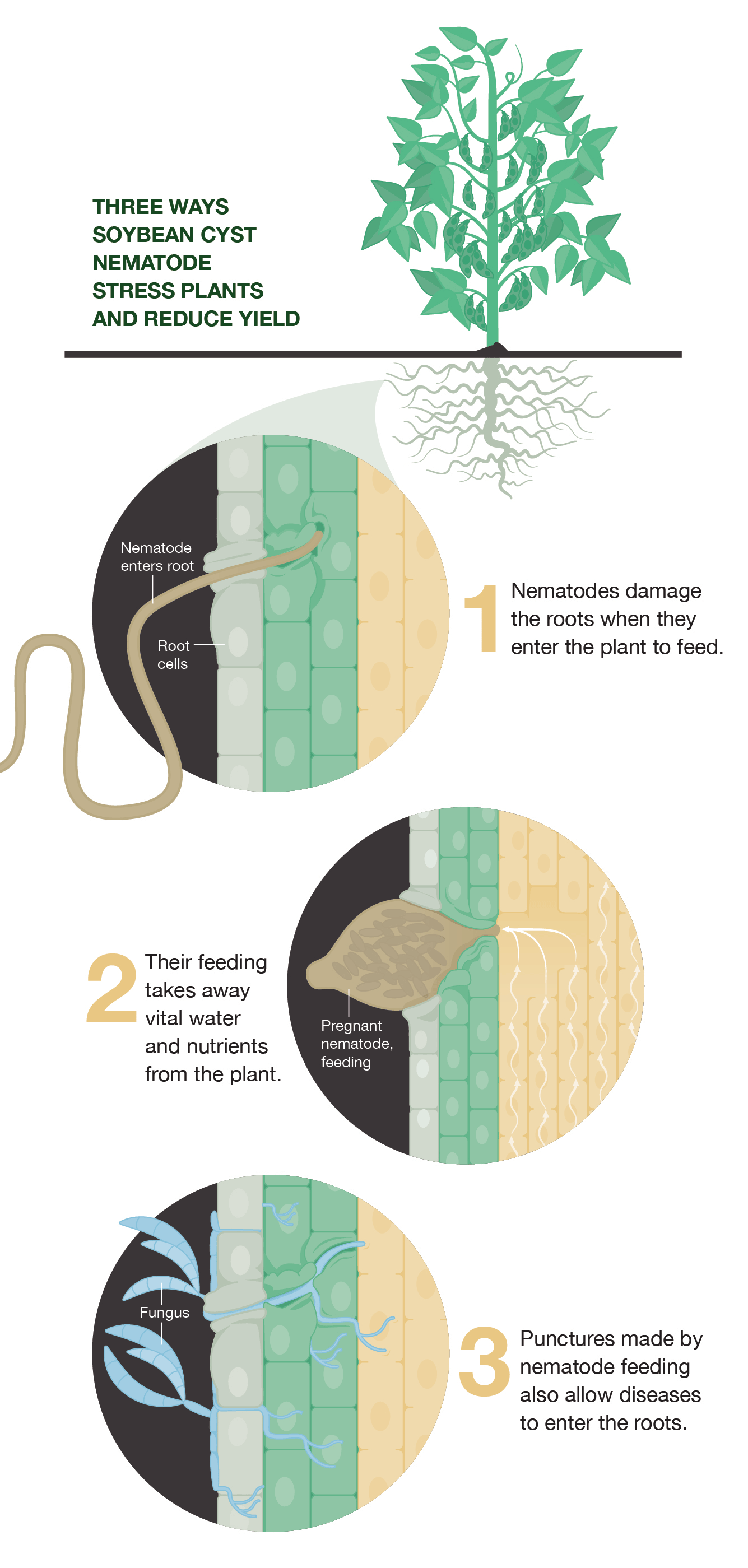Soybean cyst nematode
 The duration of the Soybean cyst nematode (SCN) life cycle runs from 3-4 weeks. The juvenile (J2) migrates in soil and penetrates plant roots completely, usually just behind the root tip. The juvenile moves intracellularly to the root vascular tissue, often leaving a zone of visible root necrosis along their migratory path within the root. The J2 uses thrusts of its stylet and secretes cell-wall-degrading enzymes to migrate directly through plant cells. When the J2 reaches the root vascular tissue, nematode stylet secretions modify selected plant cells into an elaborate feeding site called a syncytium. The J2 will not continue development unless a syncytium is formed for feeding. The syncytium is a large, metabolically active feeding site that becomes multinucleate as neighboring plant cells are incorporated into the syncytium by cell wall dissolution and cell fusion. The J2 feeds from the syncytium and begins to swell and become immobile. Approximately half of the juveniles will become swollen females with a characteristic “lemon” shape. The majority of the female body (except for the head) breaks through the root surface and becomes visible on the surface of the root. After fertilization, the majority of the 200-600 eggs produced by the female are retained within its body. As the gravid female dies, its cuticle becomes a brown, hardened structure (the cyst) that encases and protects hundreds of viable eggs. Cysts often fall from roots and remain free in the soil. The eggs within cysts are in a dormant state—they do not hatch until soybeans are planted for the next growing season. Source: The American Phytopathological Society.
The duration of the Soybean cyst nematode (SCN) life cycle runs from 3-4 weeks. The juvenile (J2) migrates in soil and penetrates plant roots completely, usually just behind the root tip. The juvenile moves intracellularly to the root vascular tissue, often leaving a zone of visible root necrosis along their migratory path within the root. The J2 uses thrusts of its stylet and secretes cell-wall-degrading enzymes to migrate directly through plant cells. When the J2 reaches the root vascular tissue, nematode stylet secretions modify selected plant cells into an elaborate feeding site called a syncytium. The J2 will not continue development unless a syncytium is formed for feeding. The syncytium is a large, metabolically active feeding site that becomes multinucleate as neighboring plant cells are incorporated into the syncytium by cell wall dissolution and cell fusion. The J2 feeds from the syncytium and begins to swell and become immobile. Approximately half of the juveniles will become swollen females with a characteristic “lemon” shape. The majority of the female body (except for the head) breaks through the root surface and becomes visible on the surface of the root. After fertilization, the majority of the 200-600 eggs produced by the female are retained within its body. As the gravid female dies, its cuticle becomes a brown, hardened structure (the cyst) that encases and protects hundreds of viable eggs. Cysts often fall from roots and remain free in the soil. The eggs within cysts are in a dormant state—they do not hatch until soybeans are planted for the next growing season. Source: The American Phytopathological Society.
Project: Research and illlustration.
Client: Agriculture magazine Thrive








